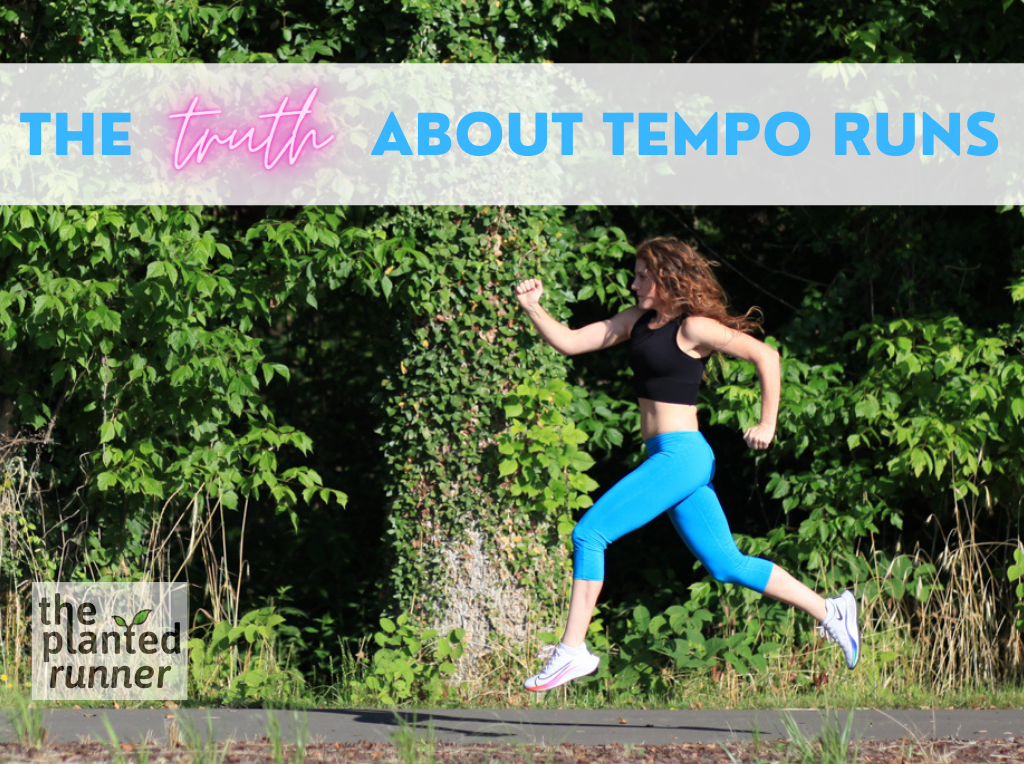A tempo run, or a threshold run, is a classic workout with a lot of benefits and a lot of confusing terms. Let’s clear that up!
Running is a lot like baking a cake. With the right ingredients, the right tools, the right recipe and some experience in the kitchen, you can craft a restaurant-worthy gourmet dessert. On the other hand, if you simply throw together a bunch of random things in a blender and pop it in the oven, you might get something edible, but it’s highly unlikely that it’s going to be amazing. Following a recipe with quality ingredients will have a far higher chance of success.
The same is true for endurance running. There are plenty of ingredients, recipes, and tools for creating a great race experience and no one method is superior for every runner. But there are some tried and true ingredients that come up again and again because they are so useful and effective. Just like staples in your pantry, there are staple workouts that you’ll want to stock up on.
One of the most fundamental groups of staple workouts are tempo runs.
Tempo runs have quite a few flavors so I’ll go over the different variations and names. We’ll get into when to use it, how often, and when to add a little spice.

What Are Tempo Runs?
The simplest way to describe a tempo is a sustained effort for a specific period of time. It is harder than easy, but not too hard. Now that’s not very scientific which is going to bother those runners out there that love all the data!
But actually, this definition really hits the spirit or the goal of the tempo perfectly well–you are running hard, but not too hard, for a specific amount of time, with the goal of increasing the amount of time you can run at that pace.
Let’s look a little deeper at what’s going on because that will tell us how best to use this ingredient in a runner’s recipe and in what amount.
The Thresholds of Tempo Runs
There are three main phases of intensity when it comes to running that all play a key role in determining how you should run your tempo. To put it simply, it’s low, medium, and high intensity.
Those phases are split up by two invisible lines called the aerobic threshold, and the lactate or anaerobic threshold.
All tempo runs are in the medium effort phase, but that does not mean they will feel like a medium effort by the end! The closer you get to crossing the line, the harder this will feel.
Aerobic Threshold
When you run at an easy pace, the effort is called aerobic, meaning with oxygen. Your aerobic system is the main energy system used in long distance running, so you’ll want to develop it well to get better at endurance running.
I like to call easy running the cake and everything else is the frosting and the decoration. The cake is clearly the most important part and can stand alone as a pretty great dessert. But some frosting or faster endurance running and a few fancy sprinkles take the cake to the next level.
Once you start to run harder than an easy pace, there will be a certain point when the effort starts to get more challenging. Your body will start to shift from happily using oxygen to burn fat, protein, and carbohydrate, and will start to build up lactic acid in the bloodstream. Your aerobic threshold is the highest level of exercise intensity at which you can run without accumulating significant lactic acid in the blood. For most runners, this is roughly current marathon race pace.
So how can you make sure that you are running the right pace to increase your aerobic threshold? A good rule of thumb for those without a definable marathon race pace is the target heart rate zone of 60-80% of maximum heart rate.
Another way to sneak in some aerobic threshold work is to drizzle in a few miles of marathon pace into some of your long runs. I also love adding a steady run the day before your long run, which is about marathon pace or up to 30 seconds per mile slower.
This not only sneaks in a little more marathon pace practice, but it also pre-fatigues your legs for the next run. That makes your long run feel a little bit harder, but it also allows you to shorten the long run to under 3 hours, providing the maximum benefit with the least amount of risk and recovery time.
Lactate or Anaerobic Threshold
Once you’ve crossed over the aerobic threshold, leg-burning lactate starts to build up. This starts off as feeling like a medium effort run but soon it will build up faster than your body can clear it.
That’s when you’ve reached the lactate or anaerobic threshold.
Before you cross the line, your body can still clear away the lactate up to a point or even use the lactate as fuel. But, if you keep running at that same challenging pace or perhaps even speed up, you’ll cross over into the anaerobic threshold.
Lactic acid and lactate are sometimes used interchangeably even though they are technically different. Lactic acid is the joining of lactate with a hydrogen ion. It’s the hydrogen ion in the lactic acid that contributes to the burning sensation in the muscles during exercise, not the lactate. The slow down in your pace is your body’s way of protecting itself from a dangerous rise in acidity in the muscles, or acidosis.
Lactate can get recycled back into our system to provide energy for our muscles, so it is not a bad thing.
For most runners, this pace will be about what you can run for 60 minutes in a race environment. So if you are a 60 minute 10k runner, your 10k pace will be your anaerobic/lactate threshold pace.
Now that doesn’t mean that you want to actually go out and run for 60 minutes as hard as you can and call it a tempo! You’ll want to break that down into manageable pieces so you are not “racing your training.”

Tempo Intervals
Whether you are a beginner or an experienced marathoner, jumping straight into big tempo runs early in your training cycle are probably going to be too much too soon. A better way of getting to the speeds that you are hoping for is to break up the tempos into smaller efforts.
So you might start off with just a mile or five minutes or two miles at your threshold pace broken up with a minute or two of easy jogging and then repeat as many times as your fitness suggests. The idea is to get a “speed spike” and cross the threshold line, then bring it back down. This allows you to spend more time at higher speeds with great form, while not pushing your limits too far and risking injury.
Focus on Current Fitness Instead Of Goal Pace
One important thing to remember is that when we talk about race paces or even goal paces, what we really want to do is train at our current pace, not what we hope to achieve. You might have an amazing race goal, and I’m all for big goals, but your fitness in training might not match that just yet. So if you are targeting a goal marathon pace in your workouts and you continually end up crossing that lactate threshold line, you’re going to end up undermining your training.
If you are a marathoner, the idea is to raise our happy and efficient aerobic threshold as high as possible. That will ensure you can run the entire marathon distance as fast as possible without being forced to slow down when your anaerobic system runs out of gas.
And while aerobic capacity is king in endurance running, you will also want to push the lactate and anaerobic thresholds back, teaching your body to better clear lactic acid when it builds so you can use it as fuel. That means some of your tempo runs should be fast enough to build up lactic acid and cross that threshold.
Effort is More Important Than Pace
Overall, when it comes to tempos, or really any kind of running workout, your actual pace in training is far less important than your effort. If it’s hot and humid, you are going to build up lactic acid at a far slower running speed than you would in perfect conditions. If you don’t slow your pace accordingly, you will end up crossing into the anaerobic zone when you were trying to target your aerobic threshold.
That doesn’t always mean you’ve ruined your cake; you’re just not following the recipe.
But you also don’t always have to be so scientific about it. Paces can be a nice guide, but it always has to be about effort.
Know The Why Behind Your Workout
Understanding why you are running specific types of workout is incredibly helpful to get the effort level intended to get the results that you are looking for. It’s easy to overcomplicate things, add in new ingredients, just to spice things up.
But more often than not, simple, quality ingredients in just the right amount along with a great recipe will make a far better cake. And a better runner.

